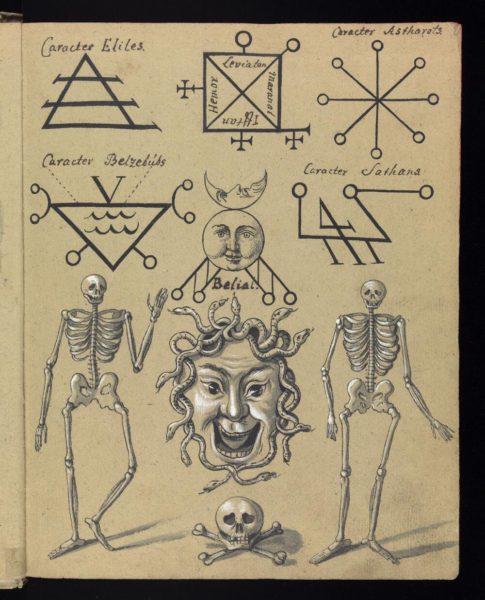Recently, my attention was brought to a fantastic book from the Wellcome Library: the Compendium rarissimum totius Artis Magicae sistematisatae per celeberrimos Artis hujus Magistros [A Very Rare Compendium of the Whole Art of Magic, Systematised by the Most Famous Masters of this Art].
One page allegedly depicts the signs for various demons:

Compendium rarissimum, fol. 2r
The familiar symbol at the top right? That’s for Astaroth, a Duke of Hell. It doesn’t match up with the older sixteenth- and seventeenth-century traditions, though.
The book claims to be from 1057, but is actually from c.1775. This sort of pseudo-scientific magic and demonology is a creation of the Renaissance and an emphasis on rationality and systematisation; in fact, the very next page has symbols for the elements, demonstrating that up to the Enlightenment, there wasn’t much difference between science, magic and demonology.
But by the time this book appeared, it was already out of date. The great witch trials were long over, and the author’s dating his work back to 1057 is a bit of pseudo-medieval sensationalism. The first page tells the prospective reader: “Noli me tangere [Don’t touch me]”, which to me sounds more like an advertisement than any real warning (and would to any self-respecting PC too!). Certainly, the lavish illustration makes the whole thing look more like a scandalous coffee-table book than anything intending to be practical.
And where’s this Lord of Change? I’ve put him after the break because he’s very slightly NSFW:
